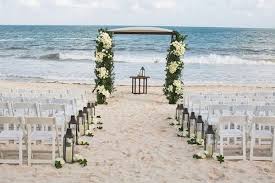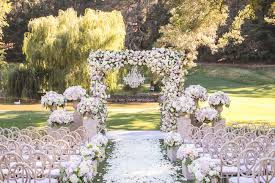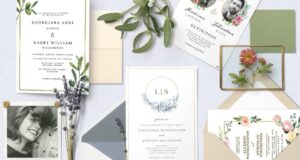As you begin to plan and look for great wedding ceremony ideas, you and your fiancée will begin to see that planning a wedding is an enormous undertaking, dominated by various rules and points of etiquette. Depending on how formal you decide to make your ceremony and reception, you may need to follow an extensive list of protocols. Below are some fantastic wedding ceremony ideas for planning a traditional, formal wedding.
Wedding Ceremony Ideas – Seating
In less formal situations, seating at the ceremony is typically just chosen as the guests arrive. However, in formal weddings the seating arrangement of the attendees should follow a protocol which conveys respect for the various personal relationships to the bride and groom. In a traditional wedding, the bride’s family is usually seated on the left side of the church, and the groom’s on the right. The parents are usually seated in the front rows, and brothers, sisters, and their spouses in the second rows on each side. The third rows are reserved for grandparents and other close relatives, followed by additional relatives and finally, the friends of the bride and groom.

Wedding Ceremony Ideas – Processional / Recessional Order
Because of the formality involved, there is a fairly well defined order that a wedding processional should take. The order in which members of the wedding party arrive at the altar are symbolic and represent their relationship to either the bride or groom. In a formal wedding ceremony, the processional will take place in this order, after the groom has taken his place at the altar:
1. Clergyman, priest, rabbi, or other religious figure who will be conducting the ceremony
2. The groomsmen, typically walking in pairs
3. The junior ushers, if there are any
4. Junior bridesmaids, if any have been selected
5. Bridesmaids, who can walk either in single file or in pairs
6. Maid of honor
7. Ring bearer
8. Flower girl
9. The bride, escorted by her father
Wedding Ceremony Ideas – Music
Music is an important part of a wedding, and the selections chosen should evoke appropriate emotions for the ceremony. If you will be married in a religious venue, such as a church or synagogue, your musical selections may be restricted, depending on the dictates of that particular religious faith or congregation. In that case, you will be offered a common selection of music to be performed during each stage of the ceremony. If you will be choosing your own music, however, you will want to consider a selection for the Prelude to the ceremony, the processional and recessional, as well as during the ceremony itself.
Wedding Ceremony Ideas – Flowers
Flowers, along with other decorations, will create the ambience and mood for your wedding. A good rule of thumb when planning your floral arrangements and decorations is, the more formal and elaborate the wedding ceremony will be, the more profuse and abundant should be the flowers and decorations. While an informal wedding ceremony may only require a bridal corsage and one flower arrangement, the bride at a formal ceremony will usually carry a large, elaborate, cascading bouquet. Similarly, the floral displays and arrangements should be elegant and oversized. The flowers should convey a sense of extravagance that matches the significance of the day.

Wedding Ceremony Ideas – Special Touches
One very popular component of a traditional and formal wedding is the release of doves at the end of the ceremony. White doves have always been a symbol of love, holiness, and fidelity.
Despite the cost of the reception, the wedding reception is truly the heart of your wedding day. If you are not especially fond of rules and regulations, then consider the fact that a traditional and formal wedding ceremony may not be for you. Although contemporary weddings often include some of the formal traditions and ignore the rest, if you are concerned about following the precise etiquette for a formal wedding ceremony then you will need to adhere to some precise standards and procedures. Adhering to these standards is one way to make a statement to your guests that you value social traditions and are a capable member of your social group. If, however, you and your fiancée prefer to march to your own drumbeat, consider a less formal wedding that will allow some latitude in the protocol.




